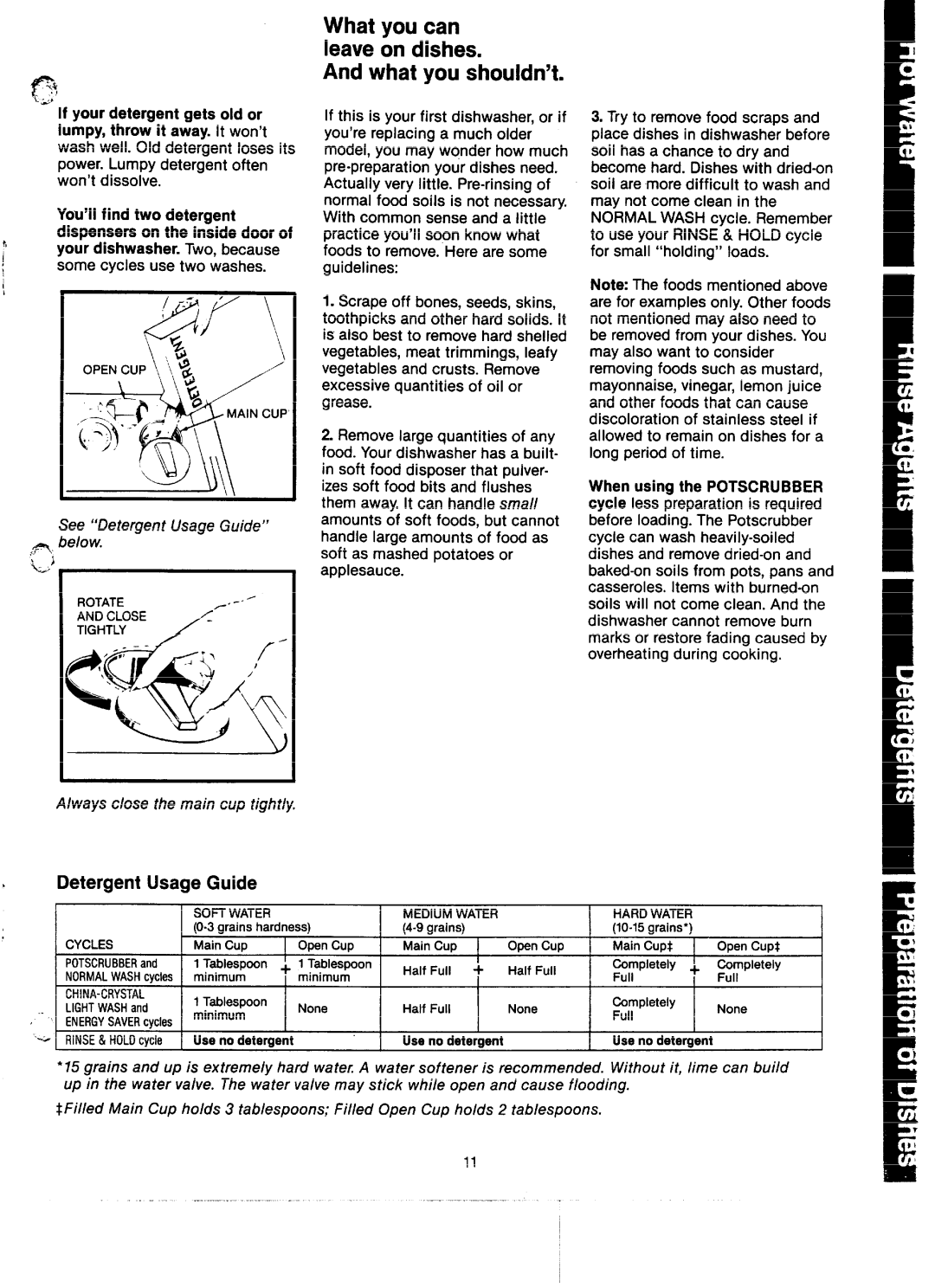GSD2600D specifications
The GE GSD2600D is a notable entry in the realm of dishwashers, designed to deliver effective cleaning performance combined with user-friendly features. This model, part of General Electric’s extensive lineup, offers a range of specifications and technologies that appeal to modern households.One of the standout features of the GSD2600D is its 12-place-setting capacity. This allows for efficient cleaning of dishes, pots, and utensils, making it a practical choice for families or individuals who frequently entertain guests. The layout of the interior is carefully designed to accommodate various dish sizes, ensuring optimal use of space.
In terms of cleaning performance, the GSD2600D employs a powerful wash system that includes a multi-directional spray arm. This innovative design ensures that water reaches all surfaces of the dishes, providing thorough cleaning even for heavily soiled items. Additionally, the dishwasher features a high-temperature wash option, which sanitizes dishes effectively, ensuring that harmful bacteria are eliminated.
Energy efficiency is another hallmark of the GSD2600D. This model is designed to consume less water while still delivering outstanding cleaning results. It is ENERGY STAR certified, indicating that it meets strict energy efficiency guidelines set by the U.S. Environmental Protection Agency. This not only benefits the environment but also helps users save on utility bills over time.
The dishwasher comes equipped with various wash cycles, including options for light, normal, and heavy loads. This versatility allows users to choose the most appropriate cycle based on their needs, optimizing water and energy usage. The unit also includes a tall tub design, which provides additional space and flexibility for larger items like pots and pans.
Noise levels are an important consideration for many consumers, and the GSD2600D operates quietly, thanks in part to its sound insulation materials. This means that users can run the dishwasher at any time of day without disturbing the household.
Installation is straightforward, with a compact design that fits well in most kitchen spaces. User-friendliness is further enhanced by the simple control panel, making it easy for anyone to operate.
In summary, the GE GSD2600D dishwasher is an excellent choice for those seeking a reliable and efficient kitchen appliance. With its capacity, powerful cleaning system, energy efficiency, and user-centric design, it stands out as a practical solution for managing dishwashing needs in contemporary lifestyles.

